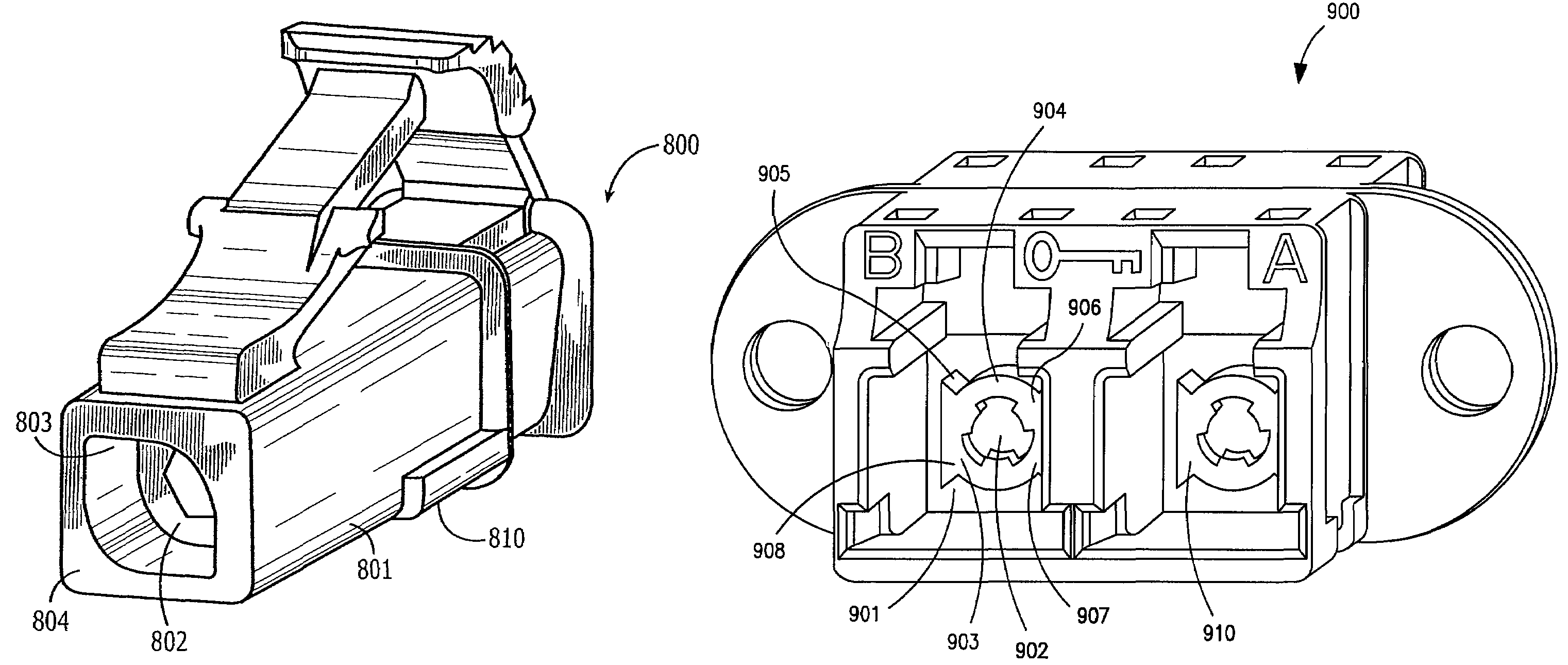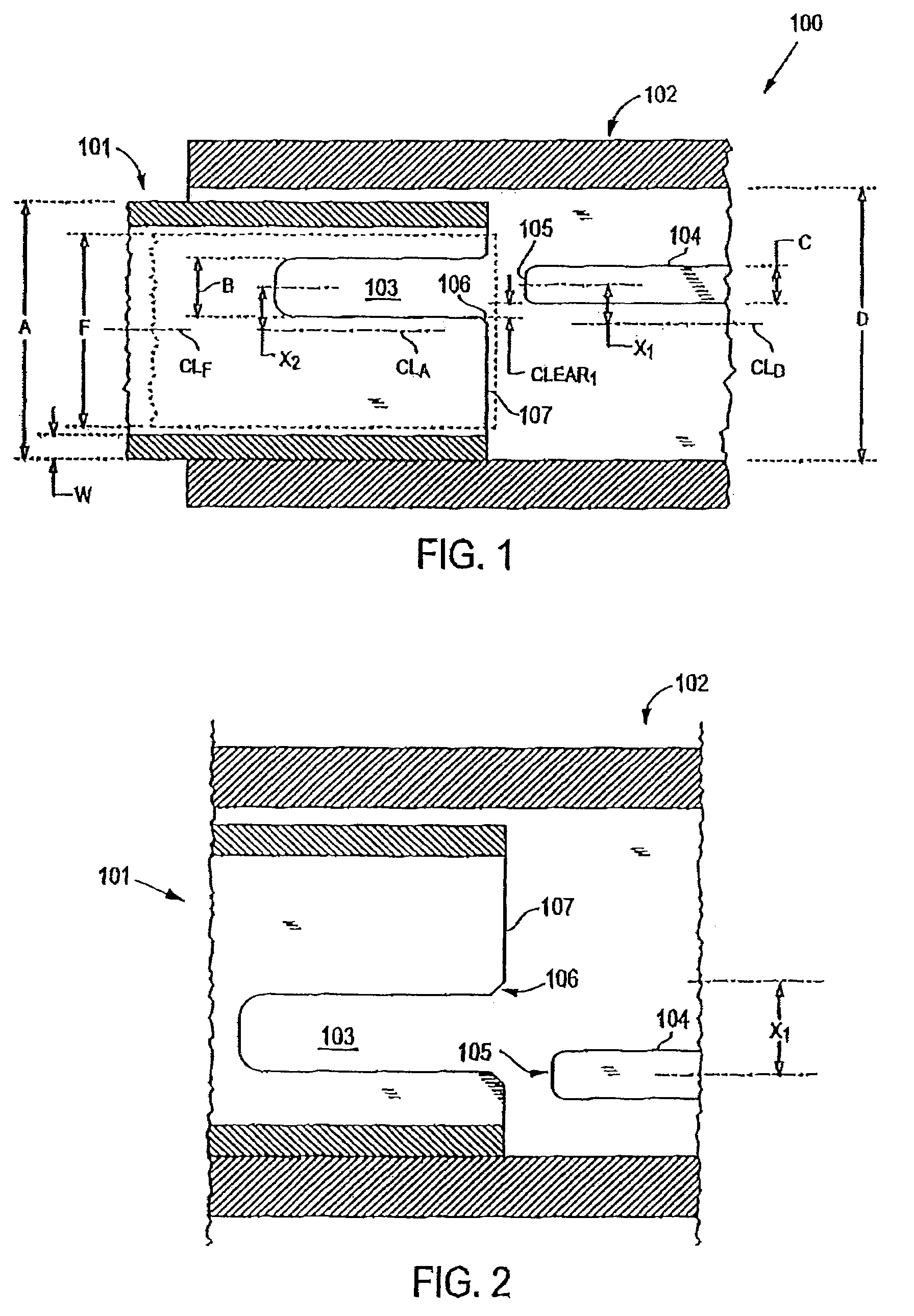Connector and receptacle containing a physical security feature
a technology of physical security and connectors, applied in the field of connectors, can solve the problems of optical connectors, high loss, couple, etc., and achieve the effects of low cost, low loss, and low cos
- Summary
- Abstract
- Description
- Claims
- Application Information
AI Technical Summary
Benefits of technology
Problems solved by technology
Method used
Image
Examples
Embodiment Construction
[0023]The present invention relates to a connector system comprising a series of connector components which interconnect with each other in a discretionary way. Referring to FIG. 1, a preferred embodiment of a mating plug 101 and receptacle 100 of the connector system is illustrated. As shown, the plug 101 is partially inserted into the receptacle 100, which, in this embodiment, is a jack having a tub portion 102. Although a jack is discussed herein in detail, it should be understood that the receptacle of the present invention is not restricted to a jack and may be any structure configured to receive a plug, including, for example, an adapter for connecting two plugs together or an integral connector on an active device (e.g., transceiver) or passive device (e.g., splitter).
[0024]The plug typically contains a conductive element, such a fiber or wire, which mates with a similar element in the receptacle. In fiber optic applications, it is common for the conductive element to be cont...
PUM
 Login to View More
Login to View More Abstract
Description
Claims
Application Information
 Login to View More
Login to View More - R&D
- Intellectual Property
- Life Sciences
- Materials
- Tech Scout
- Unparalleled Data Quality
- Higher Quality Content
- 60% Fewer Hallucinations
Browse by: Latest US Patents, China's latest patents, Technical Efficacy Thesaurus, Application Domain, Technology Topic, Popular Technical Reports.
© 2025 PatSnap. All rights reserved.Legal|Privacy policy|Modern Slavery Act Transparency Statement|Sitemap|About US| Contact US: help@patsnap.com



